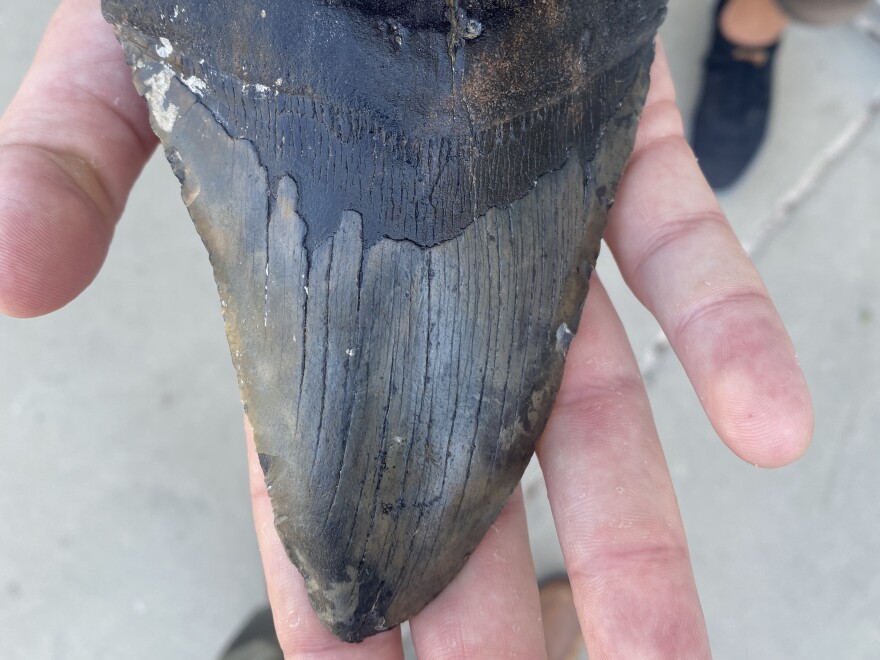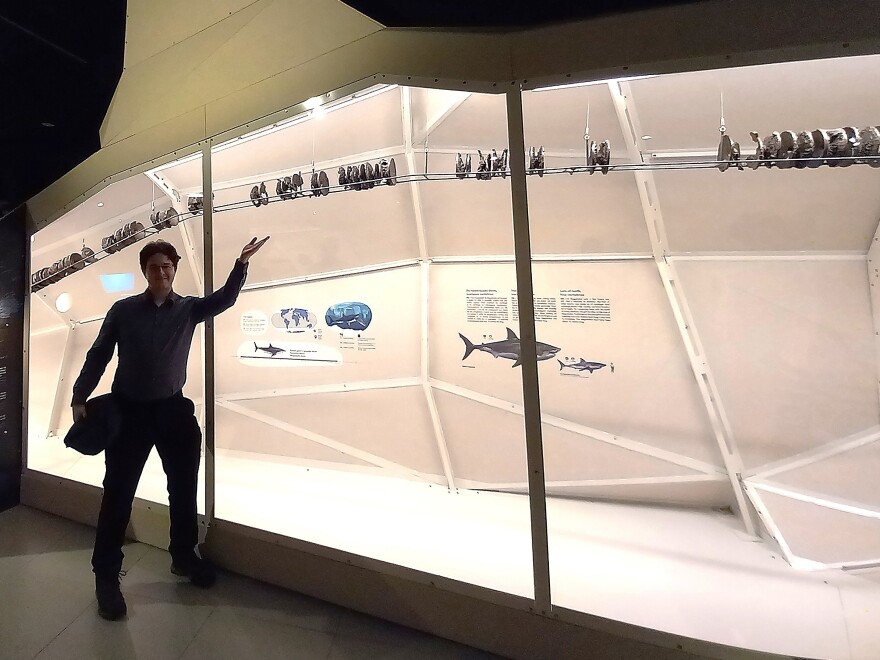The megalodon went extinct 3.6 million years ago, and is thought to be the largest shark that ever swam the Earth. But there's debate over what it looked like. Most scientists have described it as a bigger version of today's great white shark, a depiction that has informed its appearance on the silver screen like in the 2018 film "The Meg."
A research team now suggests the giant shark may have been more slender than scientists thought, according to a new publication in Palaeontologia Electronica. If that's true, it would alter our understanding of how it behaved in its ancient environment — and what mark it may have left on the ocean ecosystem of today.
"As one of the largest carnivores that ever existed," explains Kenshu Shimada, a paleobiologist at DePaul University, "deciphering the biology of Megalodon is critical to understand the role large carnivores play in the context of the evolution of marine ecosystems and how its extinction influenced the development of the present-day ocean."
A toothy question mark
Phillip Sternes grew up outside of Chicago. There wasn't a drop of salt water in sight. But he remembers he was five or six when he first encountered Megalodon in the movie "Jaws."
"I watched it over and over on a videotape countless times," he recalls. "There's actually a scene where Chief Brody's flipping through the book and then he sees a picture of the Megalodon."
Sternes began to devour books on sharks and he watched Shark Week religiously. It was only a matter of time before he became a shark researcher himself. He's currently a PhD student at the University of California, Riverside. When Sternes was getting into the field, he learned that what Megalodon looked like was an unresolved question. The problem was the lack of fossil evidence — just a smattering of scales and vertebrae, and tons of teeth. Nothing more.

"You literally will pick every single detail you can out from that limited fossil evidence to try to figure out what the heck did the shark look like," says Sternes.
For years, researchers assumed that Megalodon was just a bigger version of the modern-day great white — a predatory shark at the top of its food chain with large serrated triangular teeth.
In the 1990s, a team calculated the relationship between the largest vertebra of a great white shark and its total length. "Basically, if you found a great white [shark's] vertebra," says Sternes, "you could plug it into that equation and you can predict the length of the shark just from the vertebra. Simple."
Researchers applied the same logic to a vertebra from the most complete Megalodon fossil there is. The result was that the specimen would have been some 30 feet — double or triple the length of a typical great white.
But then, a couple years ago, a different group lined those same vertebrae up to make a computer model of Megalodon. The spine alone measured about 36 feet and the animal some 52 feet.
Sternes and his colleagues smelled something... fishy.
"So I'm like, 'OK, there's a huge discrepancy going on right there,'" he says. "The spine is longer than what was originally predicted for the total length of the shark itself."
A great white shark is big and bulky, says Sternes. So if Megalodon were that long, he's doubtful its spine could have supported a great white's thicker body shape. "You got to think about swimming," he says, "structural support underwater, just maintaining the actual body shape, because everything rides on the spine."
Sternes and his colleagues concluded that Megalodon must have been more slender. This means it would have still been a fearsome predator, but it would have had a longer digestive canal and cruised more slowly "with occasional 'burst swimming' for capturing prey," says Shimada. That would have allowed the giant shark to process its food for a longer period of time and absorb additional nutrients.
Biting back
Jack Cooper says the new publication doesn't supply sufficient evidence to support a more svelte Megalodon. He's a graduate student in paleobiology at Swansea University in the UK. He's part of that other group that measured the spine and came up with the longer estimate of Megalodon's length.
Cooper says the new publication presents an argument his group already considered. "It does reaffirm that we would need to find a complete skeleton to know for sure what Megalodon looks like," he says. "But if you're going to present an alternative hypothesis, you should use a lot of statistical work to try to make your case."
And that's something he says this paper doesn't do.
Cooper agrees this is an important riddle to solve, once more fossil evidence becomes available. That's because Megalodon likely kept its most essential organs warmer than the surrounding seawater, which would have allowed it to swim further and faster.
Knowing its size and body shape tells us how much it likely had to eat to maintain such a lifestyle. "And that can tell us quite a lot about what made it vulnerable to extinction about 3 million years ago," says Cooper.
At the end of Megalodon's reign, sea levels were changing, ruining coastal habitats. This would have meant less food, possibly contributing to the giant shark's extinction. Cooper says the reasons behind Megalodon's vanishing could help us respond to the plight of today's sharks, many of which are endangered on a planet again in flux.
Copyright 2024 NPR. To see more, visit https://www.npr.org.




